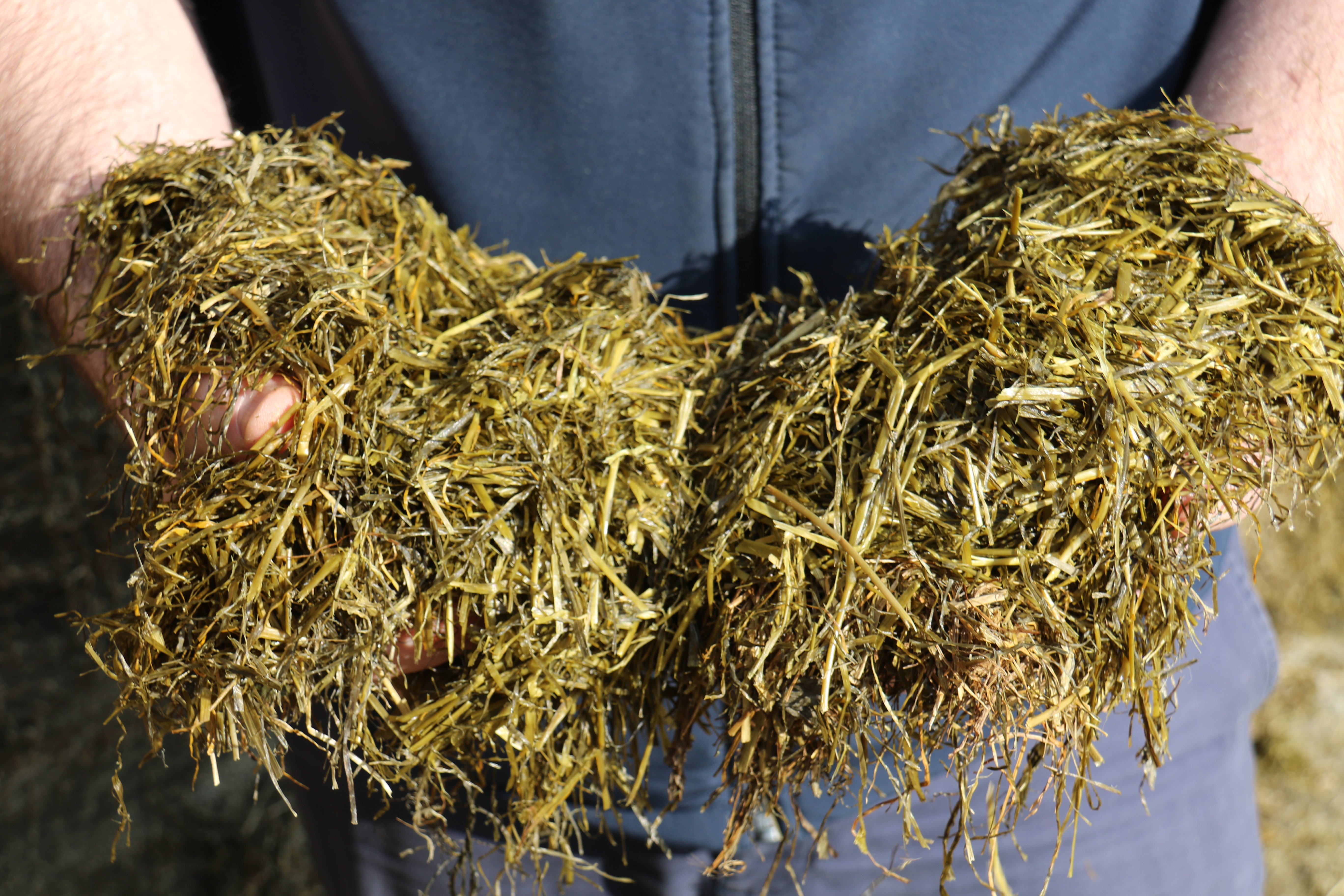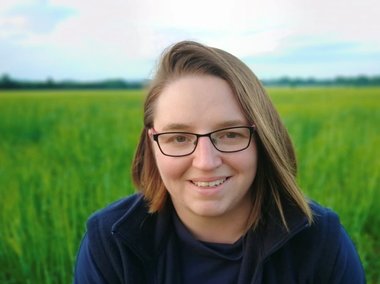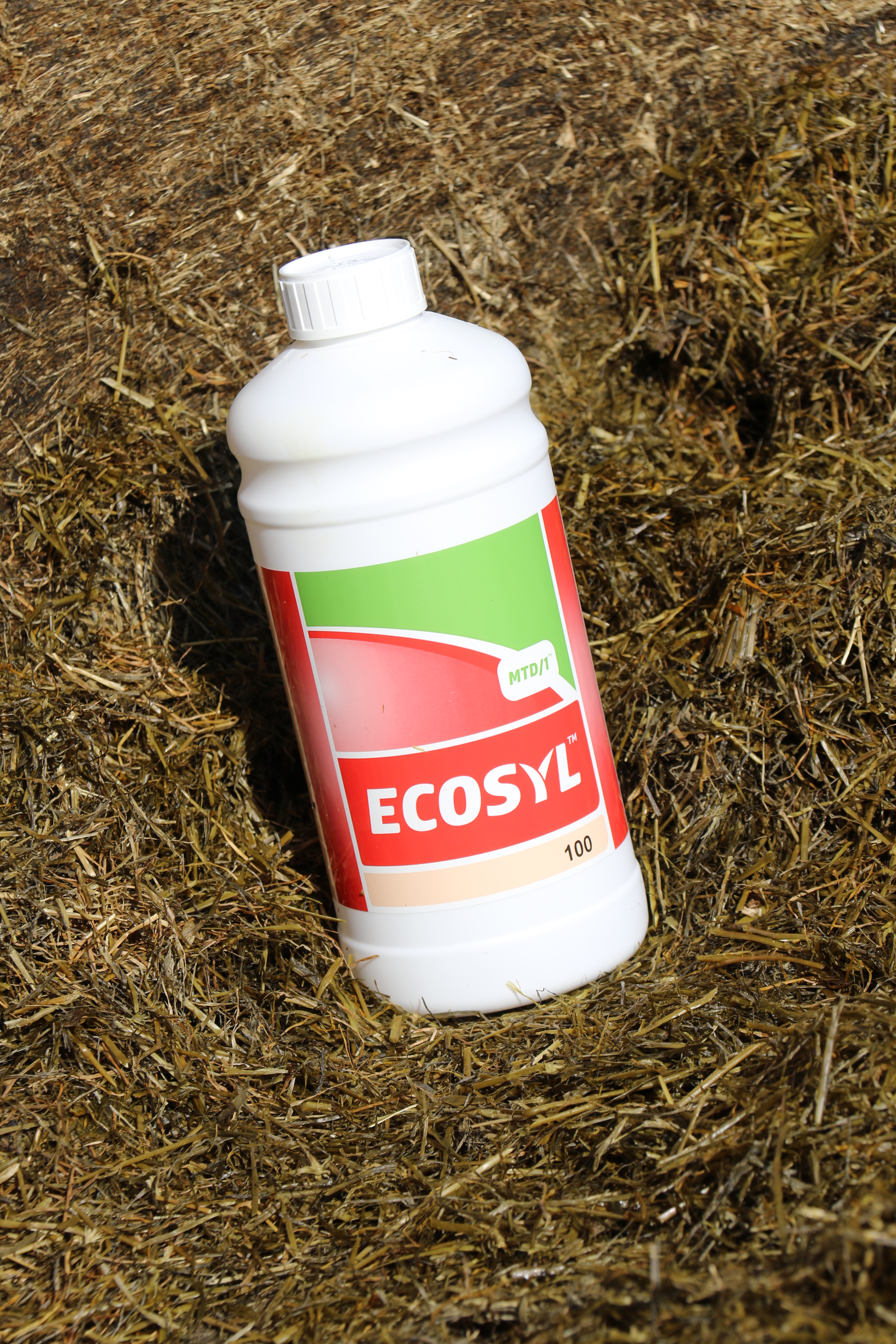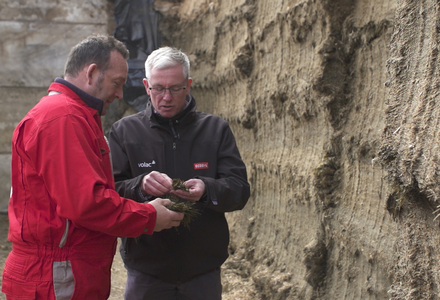Weighing up the value of more milk from silage
15 March 2021
Improving milk from forage and silage is a key goal for many farms. But how could this benefit the business financially?
A full farm approach to sustainability is becoming increasingly important for running a profitable dairy farm, says Dr Sophie Parker-Norman, head of research and development into animal nutrition at Volac.
In our volatile world, farms need to be able to navigate changing scenarios.
The weather is the most obvious one of these,” says Dr Parker-Norman. “Another is milk price. But another is the cost of feed ingredients.
“Feed costs can account for up to around 50% of the cost of milk production. This fluctuates depending on external pressures as well as on the availability of home-grown forage and silage.
“However, having greater choice in the source of nutrition will be key for dairy farming as we go into the next 10 years,” she suggests.

By having an adaptable feed approach, Dr Parker-Norman says it gives producers the flexibility to aim for extra milk production if the milk price is favourable, or to take a ‘produce the same from less’ efficiency approach to maximise income over feed cost. The key to enable this adaptable position, she says, comes from getting the most from home-grown forage and silage.
“Ensiling practices that preserve more quality into silage – including more metabolisable energy (ME) – give you the nutritional option of either aiming for maximised production or pursuing a greater income over bought-in feed cost,” she adds.
To illustrate this, Dr Parker-Norman has calculated a potential financial benefit of feeding a higher quality grass silage versus a lower quality one – in terms of the forage to concentrate ratio that would theoretically be needed in each case to produce the same yield and quality of milk. Taking the example of a high output Holstein herd comprising cows with an average body weight of 650kg and yielding 36 litres/cow/day at 4% butterfat and 3.2% protein, she calculates the total ME allowance that would need to be fed would be 279.1 MJ/cow/day. “This is the target we’re aiming for,” she points out.
Taking the example of a high output Holstein herd comprising cows with an average body weight of 650kg and yielding 36 litres/cow/day at 4% butterfat and 3.2% protein, she calculates the total ME allowance that would need to be fed would be 279.1 MJ/cow/day. “This is the target we’re aiming for,” she points out.
This is made up of 75 MJ required for maintenance plus 190.8 MJ required for milk production – the latter figure based on each litre of milk requiring 5.3 MJ to produce it at 4.0% butterfat and 3.2% protein. This totals 265.8 MJ/day. However, an additional 5% allowance has been made for any uneaten ration left in the trough and to give a safety net as a herd of cows is being fed, not an individual.
“Clearly, improvements in silage quality can be made in multiple steps,” says Dr Parker-Norman. “But in this scenario, in order to use real figures, I have based calculations on average results from 27 trials where grass silage was made both with and without the additive Ecosyl.
“In the case of these trials, the untreated silage was found to have an average ME of 10.86 MJ/kg DM, while the silage made using Ecosyl had a higher average ME of 11.39 MJ/kg DM.
“In addition, because the treated silage was more digestible, cows were able to eat more of it. This was probably because a more digestible fibre is less bulky in the rumen. We have seen in the region of an additional 0.4kg intake from silage treated with Ecosyl.
“By multiplying each silage’s ME content by its intake, we can see that the untreated silage would be sufficient to provide 162.9 of our target of 279.1 MJ/cow/day ME, whereas the higher quality silage made with the Ecosyl treatment would be sufficient to provide 175.4 MJ – which is in the region of 7.5% higher.
“To meet the 279.1 MJ/cow/day ME target, this would therefore leave 116.2 MJ to come from concentrate in the case of the untreated silage, versus just 103.7 MJ to come from concentrate by feeding the silage that had been treated.”
Based on an AHDB December 2020 reported feed cost of £249/t, Dr Parker-Norman calculates this would equate to concentrate feed costs of £2.32/cow/day if feeding the untreated silage, versus just £2.07/cow/day if feeding the treated.
“That’s a saving in purchased concentrate of 25 pence/cow/day,” she continues. “Across a 100-cow herd that would equate to a daily saving of £25.00, a monthly saving of £750 or a four-month peak lactation saving of £3,000.
“For a larger 200-cow herd it would equate to a four-month peak lactation saving of £6,000. That’s getting on for the price of a new quad bike. And for a 400-cow herd it would be equivalent to a £12,000 saving.
“Of course you have to deduct the price of the additive, but even after this it would still be in the order of a 20 pence/cow/day saving in concentrate cost. Also, the benefits wouldn’t necessarily stop there.”
Dr Parker-Norman calculates that cows on the treated silage would also only be intaking 23.7 kg DM/cow/day compared with 24.3 kg DM/cow/day for cows in the untreated group to produce the same amount of milk. In other words, she says their feed efficiency would be greater.
“Greater feed efficiency is key to improving the sustainability of the full farm approach, something that will be increasingly important in the coming years. Ask your nutritionist about the sustainability of the diet and how to maximise home-grown forage,” she suggests.
Also, compared with the untreated group where 62% of the DM intake would come from silage, she says 65% of DM intake would come from silage in the treated group.
“A higher forage to concentrate intake ratio is helpful for reducing acid load in the rumen and reducing sub-acute ruminal acidosis (SARA), which can suppress milk yield and affect body condition score,” says Dr Parker-Norman. “While this is not a huge difference, it could contribute to helping if there is a SARA problem.
“What is important to stress is that concentrates can’t be left out of the diet completely. Forage is bulky and there’s only a certain amount of it that a cow can eat, so energy intake would be limited without concentrate and other non-forage ingredients. Concentrate feed is also important to meet protein requirements, particularly in high-yielding herds. However, the figures indicate the possibilities,” she adds.

Comparison of amount of concentrate feed required to produce the same total ME intake (279.1 MJ/cow/day) when feeding untreated and additive-preserved grass silage.
| Intake (kg DM/cow/day) |
ME (MJ/kg DM) |
Total ME intake from ingredient (MJ/cow/day) |
Bought-in feed cost (£/cow/day)* |
|
| Untreated silage (no Ecosyl) | 15 | 10.86 | 162.9 | |
| Concentrate feed requirement | 9.3 | 12.5 | 116.2 | £2.32 |
| Total | £279.1 | |||
| Treated silage (made with Ecosyl) | 15.4 | 11.39 | 175.4 | |
| Concentrate feed requirement | 8.3 | 12.5 | 103.7 | £2.07 |
| Total | £279.1 |
Source: Volac calculation
*Assuming feed cost of £249/t (AHDB December 2020)
Want to make better silage? Get in touch with one of our Silage Experts today to review your silage making process and we will help you make improvements.

_listing.png?1587966548)